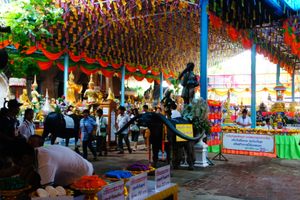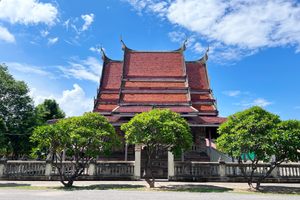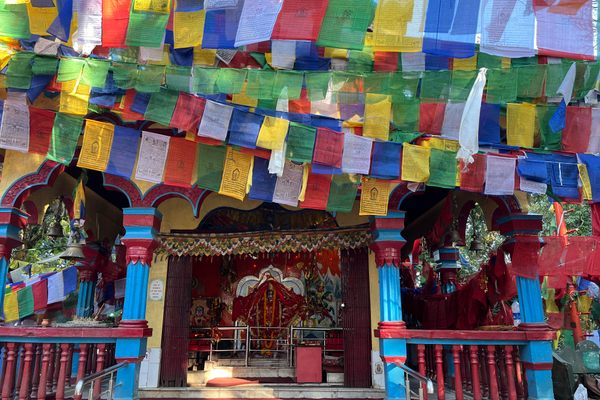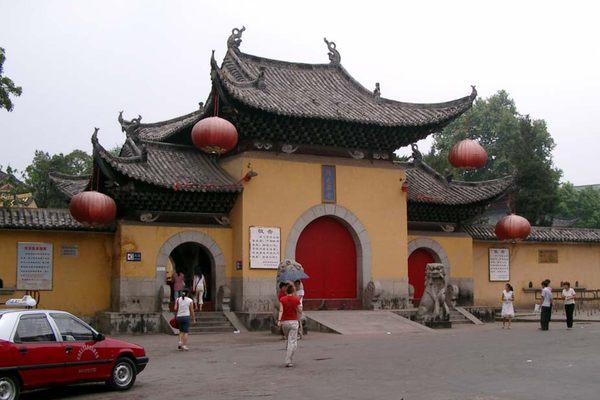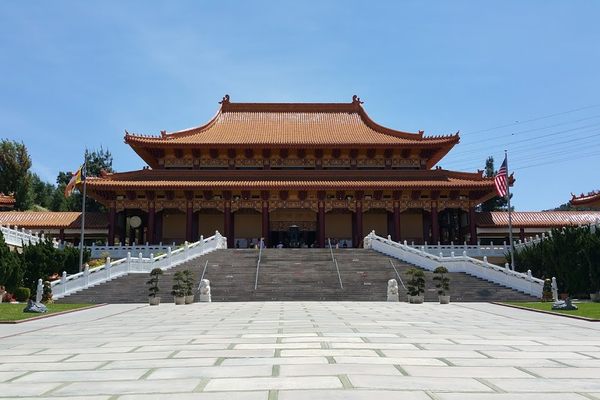About
In 1936, a monk called Luang Phor Khom became the abbot of a neglected rural wat (temple) in Suphan Buri province. Over the next 50-odd years, Phor Khom would transform the site into a grandiose monument to religious plurality, incorporating the iconography of multiple Buddhist traditions, Hinduism, and to a lesser extent, Christianity and Islam. He also vowed to erect the largest cement Buddha statue in the world on temple grounds.
That Buddha statue remains (although at 45 feet high it has since been bested by competition), as do the two cartoonish camels flanking the temple’s entrance. The walls of the main temple structure are covered with colorful, comic book-like scenes from the life of the Buddha, some of which are rendered with an unsubtle eroticism. Pigeons and dogs have taken up residence here, as elsewhere in the complex, and many of the smaller Buddha statues are covered in peeling gold paint that flutters eerily in the breeze. Despite these signs of impermanence, the building is modestly maintained, and visitors can leave a donation with one of the monks or volunteers on duty.
An atmosphere both merry and macabre enwraps Wat Phai Rong Wua, with these two elements converging in the elaborate hell garden presided over by two towering, ulcerated praed—hungry ghosts—one male and one female. The hell garden is arguably the wat’s star attraction, and its painted figures, most of them only slightly larger than life, endure punishments for crimes that range from torturing animals to flirting with monks (time has punished a few of them, too, and visitors might be forgiven for thinking that a metal rod jutting out of a plaster leg was all part of the plan).
If the Land of Hell looks a little less threatening these days, it might be because of Wat Phai Rong Hua’s gradual transition from a national destination to a place of personal veneration. Luang Phor Khom died in 1990 at the age of 88, unable to finance further development on the complex, but determined to see it thrive.
Want to let him know you’ve made your contribution? Follow the signs that read “Veneration of Luang Phor Khom,” and you’ll be led past Phor Khom’s meditation cell to an unassuming building maintained by the wat’s resident monks. There, in a transparent coffin behind a clear partition, rests Luang Phor Khom’s body, framed by moving LED lights that might seem shockingly incongruous to the situation—if they didn’t represent Phor Khom’s constantly evolving set of plans for his life’s work.
Related Tags
Know Before You Go
Wat Phai Rong Wua is a little over an hour outside of Bangkok. It's most easily accessed by car or taxi if you are coming from the city. (Note that the romanized spelling of the temple name can vary; road signs read Wat Phai Rong Hua).
Published
September 4, 2018























































